This article was co-authored by Pippa Elliott, MRCVS. Dr. Elliott, BVMS, MRCVS is a veterinarian with over 30 years of experience in veterinary surgery and companion animal practice. She graduated from the University of Glasgow in 1987 with a degree in veterinary medicine and surgery. She has worked at the same animal clinic in her hometown for over 20 years.
There are 15 references cited in this article, which can be found at the bottom of the page.
This article has been viewed 15,235 times.
Leptospirosis is a disease caused by the Leptospira bacteria. These bacteria, known as spirochetes, are most commonly introduced to a dog's system through contaminated water, soil, or contact with infected urine. In dogs, leptospirosis can spread throughout the body and cause severe liver and kidney damage.[1] [2] Leptospirosis requires veterinary treatment. If your dog is showing signs of leptospirosis, he will need prompt treatment to increase his chances of a good recovery.[3]
Steps
Recognizing Leptospirosis in Your Dog
-
1Observe symptoms of digestive upset. Leptospirosis can cause such digestive signs as vomiting, diarrhea and a loss of appetite. These issues occur on a spectrum — some dogs will have mild symptoms while others will experience such serious hemorrhagic diarrhea and vomiting (bloody diarrhea and vomiting) that they collapse and can die within 24 hours.[4] If your dog is not eating much anymore, he will start losing weight.
- Vomiting and diarrhea could cause rapid dehydration in your dog.[5] To test for dehydration, create a tent of your dog’s skin by gently pinching with your thumb and index finger. Let go of the skin tent—if it stays up for more than a few seconds, then he is dehydrated. This should not be dismissed as a minor concern, especially if your dog is not interested in eating or drinking.
- The vomit and diarrhea may contain blood, due to bleeding problems associated with leptospirosis.
-
2Check for fever. Fever is a common symptom of leptospirosis. One way to quickly assess if your dog has a fever is to check her nose — if it's wet and cold, she's probably fine; if it's hot and dry, she may have a fever.[6] To be sure, you may need to take her temperature rectally. A dog's normal temperature range is 99.5 — 102.5°F (37.5 — 39.2°C).
- To take your dog's temperature, lubricate a rectal thermometer with Vaseline or baby oil. Insert it about an inch into your dog's anus and remove it a soon as you have a reading (usually after about one minute).[7]
Advertisement -
3Take note of changes in thirst and urination. If your dog’s kidneys are infected with Leptospira, he may become very thirsty, causing him to drink more water and start to urinate more.[8] Even if he urinates more frequently, he may urinate only in small amounts.[9] His urine may be dark, indicating urinary tract problems.
-
4Examine your dog’s eyes and gums. Since liver disease occurs commonly with leptospirosis, your dog may show signs of liver disease. With liver disease, your dog’s gums and the whites of her eyes would turn yellow due to a condition called jaundice.[10]
-
5Detect respiratory problems. If Leptospira has invaded your dog’s respiratory system, he may have trouble breathing and start breathing more quickly. He may also start coughing spontaneously or have a runny nose.[11]
-
6
-
7Take your dog to your vet. Leptospirosis can make a dog very sick within just a few days of infection.[14] Take your dog to your vet as soon as you notice signs of the disease. In addition to a physical exam, your vet will test samples of your dog’s blood and urine to confirm the disease. For example, your vet will measure the level of antibodies in the blood. Your vet will also analyze the blood and urine to identify the specific type of Leptospira causing the disease.[15]
- Antibodies are substances produced by the immune system to fight infection.
- Several species of Leptospira can cause canine leptospirosis.[16]
- Your vet may want to take x-rays or perform an ultrasound to look for signs of kidney or liver disease, such as an enlarged liver; however, these signs are not specific to leptospirosis and wouldn’t confirm the disease.[17]
Treating Your Dog for Leptospirosis
-
1Start treatment immediately. Your dog’s chances of recovery are much better if you start treating him early and aggressively.[18] The earlier you begin treating him, the better the chances of preventing permanent liver and kidney damage. Leptospirosis treatment consists of general supportive care (e.g., rehydration, controlling vomiting, treatment of liver and kidney disease) and antibiotics.[19] Pain control is another aspect of general supportive care.
- Because of the vomiting, the lining of your dog’s stomach may be irritated. Your vet may prescribe a medication, called a protectant, that would coat and protect the stomach lining.[20]
- Treatment usually takes place in two phases. The first phase is short term and treats the initial signs of leptospirosis. Second-phase treatment kills any residual bacteria that would cause a long-term infection.[21]
- Your vet will explain all of the treatments your dog will need. Realize that treatment for leptospirosis can be expensive.
-
2Hospitalize your dog, if necessary. If your dog has severe leptospirosis that has progressed quickly, your vet will want to hospitalize her for aggressive treatment. In-hospital treatments include fluid therapy and antiemetics (medications to prevent vomiting). If your dog has lost a lot of blood, your vet would need to do a blood transfusion.[22]
- Your vet would also start your dog on antibiotics, even if the blood and urine results are not ready.[23] A reasonable suspicion of leptospirosis is often enough to begin antibiotic treatment.
- If your dog needs to be hospitalized, your vet may be concerned about her chances for recovery. With severe leptospirosis, even the most aggressive treatment may not be enough overcome serious organ damage.[24]
-
3Give your dog his medicines as prescribed. If hospitalization is not necessary, then you will care for your dog at home. He will likely need several medications, so make sure you understand how to administer each one. It is particularly important to give the antibiotics as directed.[25]
- Many dogs with leptospirosis respond quickly to antibiotic treatment.[26] Even if your dog gets better soon after you start him on antibiotics, continue the full treatment course.
- If you stop the antibiotic treatment early, or miss a dose, a portion of bacteria may remain in your dog’s system and make him sick again.
-
4Limit your dog’s activity. While being treated for leptospirosis, your dog should not be very physically active.[27] If your dog is crate trained, consider keeping her in her crate more often. If she is not crate trained, keep a close eye on her to make sure she doesn’t engage in any rough or active play.
- Your dog may not feel up to being very active anyway, so cage rest probably won’t be a problem for her.
Taking Precautions During Treatment
-
1Isolate your dog from your children and other pets. Leptospirosis spreads between animals and can infect humans. If you have children or other pets, keep your infected dog away from them to prevent the spread of disease.[28] If possible, keep your dog in another room until he has completed treatment.
- Set up a separate area for your dog to eliminate. If you have a backyard, you may want to create a gated off area in the yard where he could eliminate; this area should not be accessible to your other pets.[29] If you have a little dog, you could have him use pee pads in his isolated area indoors.
-
2Wash your hands after touching your dog. Whenever you pet your dog, or touch her for any reason, wash your hands afterwards.[30] You should also wash your hands after handling her food and water bowls.
-
3Wear disposable gloves when handling fluids or waste from your dog. Gloves will be very effective in preventing disease transmission from your dog to you. If he vomits or has an accident in the house, put on your gloves to clean up the area. If he's using pee pads, pick up the pee pads with gloves on.
- Throw the gloves away after use, being careful not to touch the outside of either glove with your bare hands. Wash your hands thoroughly after throwing away the gloves.
-
4Disinfect contaminated areas. When you have finished removing the fluids or waste, you will need to disinfect the area. Make a bleach solution that is one part bleach to nine parts water.[31] [32] Putting the solution in a large spray bottle would be helpful.
- Follow the instructions on the bleach container to disinfect properly.
- Wash your dog’s bedding with bleach, since it will likely be contaminated.
- Clean and disinfect your dog’s food and water bowls.
-
5Get tested for leptospirosis. Since leptospirosis can spread from your dog to you or your children, consider getting everyone in the household tested for the disease. Even if no one is sick, one of you could have been infected.[33] If your doctor detects the disease, she will prescribe the appropriate treatment.
Expert Q&A
-
QuestionHow is leptospirosis treated?
 Pippa Elliott, MRCVSDr. Elliott, BVMS, MRCVS is a veterinarian with over 30 years of experience in veterinary surgery and companion animal practice. She graduated from the University of Glasgow in 1987 with a degree in veterinary medicine and surgery. She has worked at the same animal clinic in her hometown for over 20 years.
Pippa Elliott, MRCVSDr. Elliott, BVMS, MRCVS is a veterinarian with over 30 years of experience in veterinary surgery and companion animal practice. She graduated from the University of Glasgow in 1987 with a degree in veterinary medicine and surgery. She has worked at the same animal clinic in her hometown for over 20 years.
Veterinarian Antibiotics, either from the penicillin or tetracycline family, help kill the organism, while intravenous fluids support organ function in the hope of preventing kidney and liver failure. Symptomatic treatment may also be needed, for example, pain-killers or anti-nausea drugs, to keep the patient comfortable. It's important to realize the lepto is a zoonosis, meaning it can be infectious to people, so it's essential to barrier nurse the dog and be scrupulous about avoiding contact with urine from infected dogs.
Antibiotics, either from the penicillin or tetracycline family, help kill the organism, while intravenous fluids support organ function in the hope of preventing kidney and liver failure. Symptomatic treatment may also be needed, for example, pain-killers or anti-nausea drugs, to keep the patient comfortable. It's important to realize the lepto is a zoonosis, meaning it can be infectious to people, so it's essential to barrier nurse the dog and be scrupulous about avoiding contact with urine from infected dogs. -
QuestionIs leptospirosis in dogs fatal?
 Pippa Elliott, MRCVSDr. Elliott, BVMS, MRCVS is a veterinarian with over 30 years of experience in veterinary surgery and companion animal practice. She graduated from the University of Glasgow in 1987 with a degree in veterinary medicine and surgery. She has worked at the same animal clinic in her hometown for over 20 years.
Pippa Elliott, MRCVSDr. Elliott, BVMS, MRCVS is a veterinarian with over 30 years of experience in veterinary surgery and companion animal practice. She graduated from the University of Glasgow in 1987 with a degree in veterinary medicine and surgery. She has worked at the same animal clinic in her hometown for over 20 years.
Veterinarian This is an extremely serious illness, because it can cause multi-organ failure. Also, there is an acute (sudden onset) form which causes life-threatening vomiting and diarrhea, and rapid organ shutdown. Many cases require aggressive supportive care, such as intravenous fluids, or risk dying.
This is an extremely serious illness, because it can cause multi-organ failure. Also, there is an acute (sudden onset) form which causes life-threatening vomiting and diarrhea, and rapid organ shutdown. Many cases require aggressive supportive care, such as intravenous fluids, or risk dying. -
QuestionCan leptospirosis be cured in dogs?
 Pippa Elliott, MRCVSDr. Elliott, BVMS, MRCVS is a veterinarian with over 30 years of experience in veterinary surgery and companion animal practice. She graduated from the University of Glasgow in 1987 with a degree in veterinary medicine and surgery. She has worked at the same animal clinic in her hometown for over 20 years.
Pippa Elliott, MRCVSDr. Elliott, BVMS, MRCVS is a veterinarian with over 30 years of experience in veterinary surgery and companion animal practice. She graduated from the University of Glasgow in 1987 with a degree in veterinary medicine and surgery. She has worked at the same animal clinic in her hometown for over 20 years.
Veterinarian The leptospirosis organism is susceptible to antibiotics from the penicillin family. Sick dogs do best with aggressive intravenous fluid therapy, intravenous antibiotics, and intensive nursing. If this succeeds in preventing organ failure, then the dog may recover (but may have lepto present in their urine for months afterwards).
The leptospirosis organism is susceptible to antibiotics from the penicillin family. Sick dogs do best with aggressive intravenous fluid therapy, intravenous antibiotics, and intensive nursing. If this succeeds in preventing organ failure, then the dog may recover (but may have lepto present in their urine for months afterwards).
Warnings
- Without proper treatment, a dog with leptospirosis can shed the bacteria in its urine for up to three months after infection.[38]⧼thumbs_response⧽
- Young dogs have a high risk for developing serious leptospirosis.[39]⧼thumbs_response⧽
- Children have a high risk of getting leptospirosis from an infected pet.[40]⧼thumbs_response⧽
- Liver and kidney damage due to leptospirosis can be fatal.[41]⧼thumbs_response⧽
References
- ↑ http://www.vcahospitals.com/main/pet-health-information/article/animal-health/leptospirosis-in-dogs-testing/358
- ↑ https://todaysveterinarynurse.com/articles/leptospirosis-in-dogs/
- ↑ https://www.avma.org/public/PetCare/Pages/Leptospirosis.aspx
- ↑ http://www.petmd.com/dog/conditions/infectious-parasitic/c_multi_leptospirosis?page=show#
- ↑ https://todaysveterinarynurse.com/articles/leptospirosis-in-dogs/
- ↑ http://www.akc.org/learn/family-dog/dog-fever-and-temperature/
- ↑ http://www.akc.org/learn/family-dog/dog-fever-and-temperature/
- ↑ https://www.avma.org/public/PetCare/Pages/Leptospirosis.aspx
- ↑ http://www.merckvetmanual.com/mvm/generalized_conditions/leptospirosis/leptospirosis_in_dogs.html
- ↑ http://www.vcahospitals.com/main/pet-health-information/article/animal-health/leptospirosis-in-dogs-testing/358
- ↑ https://todaysveterinarynurse.com/articles/leptospirosis-in-dogs/
- ↑ https://www.zoetispetcare.com/blog/article/leptospirosis-in-dogs
- ↑ http://www.merckvetmanual.com/mvm/generalized_conditions/leptospirosis/leptospirosis_in_dogs.html
- ↑ http://www.vcahospitals.com/main/pet-health-information/article/animal-health/leptospirosis-in-dogs-testing/358
- ↑ http://www.petmd.com/dog/conditions/infectious-parasitic/c_multi_leptospirosis?page=show#
- ↑ https://todaysveterinarynurse.com/articles/leptospirosis-in-dogs/
- ↑ http://www.merckvetmanual.com/mvm/generalized_conditions/leptospirosis/leptospirosis_in_dogs.html
- ↑ https://www.avma.org/public/PetCare/Pages/Leptospirosis.aspx
- ↑ http://www.peteducation.com/article.cfm?c=2+2102&aid=454
- ↑ http://www.merckvetmanual.com/mvm/generalized_conditions/leptospirosis/leptospirosis_in_dogs.html
- ↑ http://www.vcahospitals.com/main/pet-health-information/article/animal-health/leptospirosis-in-dogs-testing/358
- ↑ https://www.zoetispetcare.com/blog/article/leptospirosis-in-dogs
- ↑ https://todaysveterinarypractice.com/diagnosis-and-treatment-of-leptospirosis-in-dogs/
- ↑ http://www.vcahospitals.com/main/pet-health-information/article/animal-health/leptospirosis-in-dogs-testing/358
- ↑ https://www.avma.org/public/PetCare/Pages/Leptospirosis.aspx
- ↑ http://www.vcahospitals.com/main/pet-health-information/article/animal-health/leptospirosis-in-dogs-testing/358
- ↑ http://www.petmd.com/dog/conditions/infectious-parasitic/c_multi_leptospirosis?page=show#
- ↑ https://www.cdc.gov/leptospirosis/pets/prevention/index.html
- ↑ https://www.avma.org/public/PetCare/Pages/Leptospirosis.aspx
- ↑ http://www.cdc.gov/leptospirosis/pets/prevention/index.html
- ↑ http://www.cdc.gov/leptospirosis/pets/prevention/index.html
- ↑ https://www.verywell.com/make-your-own-disinfectant-solution-998274
- ↑ https://www.health.nsw.gov.au/Infectious/factsheets/Pages/leptospirosis.aspx
- ↑ https://www.avma.org/public/PetCare/Pages/Leptospirosis.aspx
- ↑ https://www.avma.org/public/PetCare/Pages/Leptospirosis.aspx
- ↑ https://www.avma.org/public/PetCare/Pages/Leptospirosis.aspx
- ↑ http://www.merckvetmanual.com/mvm/generalized_conditions/leptospirosis/leptospirosis_in_dogs.html
- ↑ http://www.cdc.gov/leptospirosis/pets/prevention/index.html
- ↑ http://www.petmd.com/dog/conditions/infectious-parasitic/c_multi_leptospirosis?page=show#
- ↑ http://www.petmd.com/dog/conditions/infectious-parasitic/c_multi_leptospirosis?page=show#
- ↑ https://www.cdc.gov/leptospirosis/symptoms/index.html
About This Article
To treat canine leptospirosis, it's important to take your dog to a vet immediately to start treatment. Depending on how much the disease has progressed, your vet may recommend hospitalization before starting at-home treatment. Your dog will need several medications, so talk to your vet about how to correctly administer each one. Since leptospirosis can spread to people, it's a good idea to get everyone in your household tested for the disease. Once you know everyone is healthy and your dog is back at home, keep it separated from people and animals during recovery. Also, wear disposable gloves when handling its bodily fluids and disinfect surfaces frequently. For more tips on isolating contamination, read on!


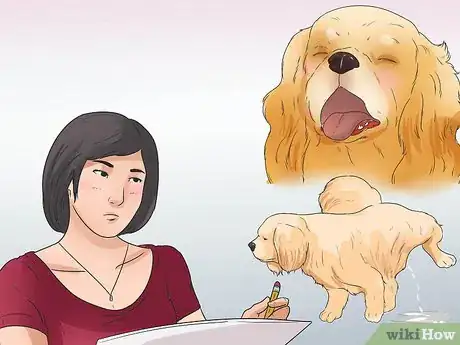







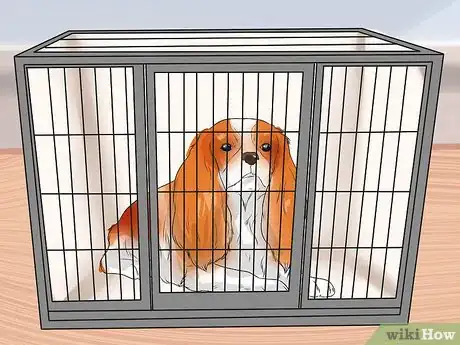





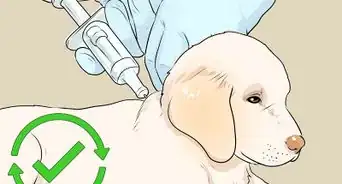

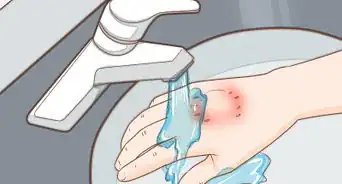


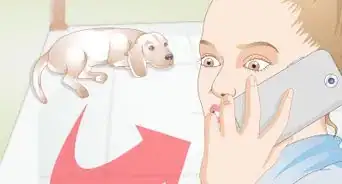





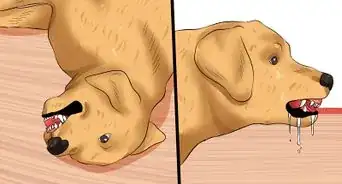

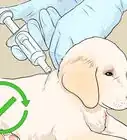
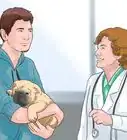
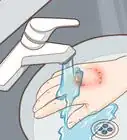





































Medical Disclaimer
The content of this article is not intended to be a substitute for professional medical advice, examination, diagnosis, or treatment. You should always contact your doctor or other qualified healthcare professional before starting, changing, or stopping any kind of health treatment.
Read More...